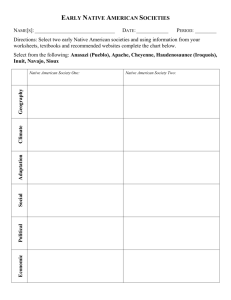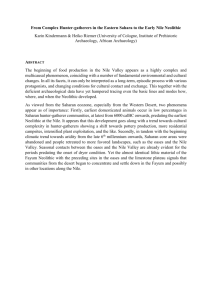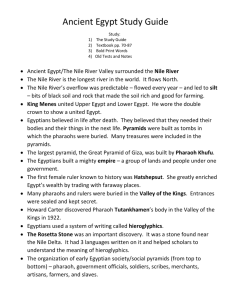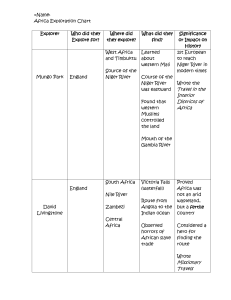Assiut university researches Recent Crustal Movement Studies
advertisement
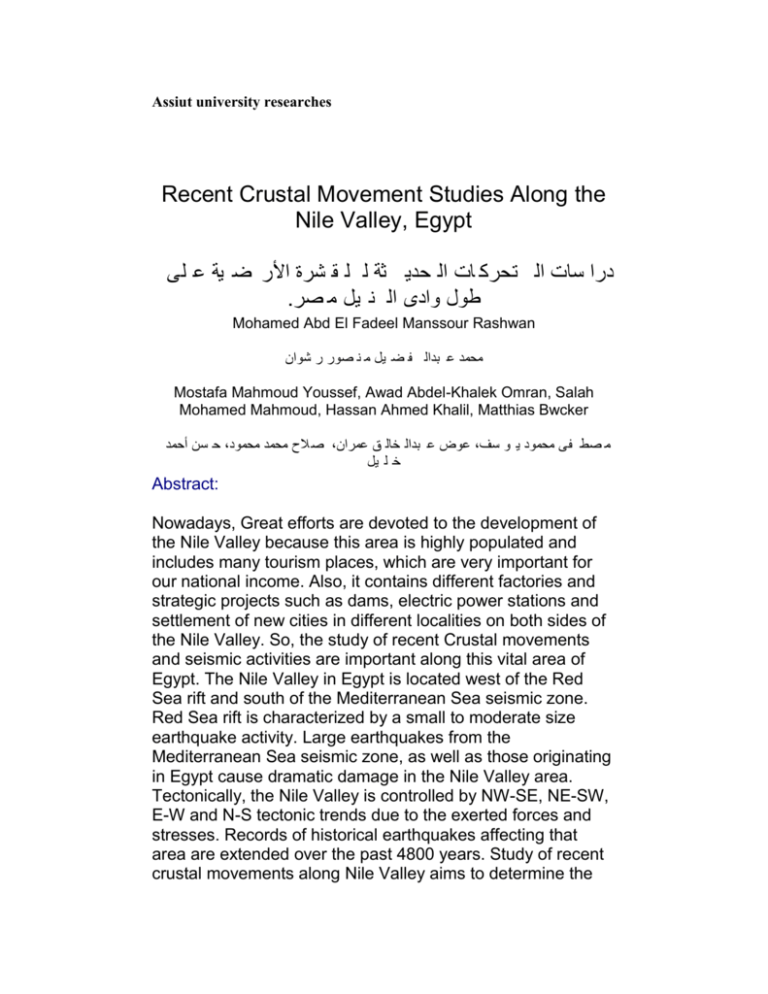
Assiut university researches Recent Crustal Movement Studies Along the Nile Valley, Egypt درا سات ال تحرك ات ال حدي ثة ل ل ق شرة األر ض ية ع لى .طول وادى ال ن يل م صر Mohamed Abd El Fadeel Manssour Rashwan محمد ع بدال ف ض يل م ن صور ر شوان Mostafa Mahmoud Youssef, Awad Abdel-Khalek Omran, Salah Mohamed Mahmoud, Hassan Ahmed Khalil, Matthias Bwcker ح سن أحمد، ص الح محمد محمود، عوض ع بدال خال ق عمران،م صط فى محمود ي و سف خ ل يل Abstract: Nowadays, Great efforts are devoted to the development of the Nile Valley because this area is highly populated and includes many tourism places, which are very important for our national income. Also, it contains different factories and strategic projects such as dams, electric power stations and settlement of new cities in different localities on both sides of the Nile Valley. So, the study of recent Crustal movements and seismic activities are important along this vital area of Egypt. The Nile Valley in Egypt is located west of the Red Sea rift and south of the Mediterranean Sea seismic zone. Red Sea rift is characterized by a small to moderate size earthquake activity. Large earthquakes from the Mediterranean Sea seismic zone, as well as those originating in Egypt cause dramatic damage in the Nile Valley area. Tectonically, the Nile Valley is controlled by NW-SE, NE-SW, E-W and N-S tectonic trends due to the exerted forces and stresses. Records of historical earthquakes affecting that area are extended over the past 4800 years. Study of recent crustal movements along Nile Valley aims to determine the displacements, and their directions and the strain rates using GPS techniques. To achieve this mission successfully, a local geodetic network consisting of 12 geodetic stations has been established. Four campaigns of GPS measurements have been carried out XXI starting from May 2007 to November 2009 (each campaign was measured in four days long continuous observation). Collected data were processed using Bernese version 5.0 considering all constraint conditions needed for analysis. In a least squares adjustment precise coordinates and velocities for the network sites were estimated. Monika deformation program is used for the computation of the deformation field in the study area. The horizontal displacement vectors, the dilatational, the maximum shear strains and the principal strain rates were estimated. The magnitudes of horizontal displacements for all epoch’s ranges from 1-5 mm/yr. Some stations of the network indicate a significant value while other stations illustrate negligible values for the movement through all periods of observations. The magnitudes of the movements are distributed inhomogeneously over the area. The seismicity map of the study area confirmed that the Nile Valley lies along a seismoactive belts (Gorshkov, 1963). Most of the seismic activity concentrated in significant areas. Focal mechanisms solution (FMS) was carried out for number of events using the polarity of P- waves. The majority of the earthquakes focal mechanisms were normal with a strike-slip component or strike-slip faulting events and another one with small minority exhibits a reverse fault. According to the stress and strain fields which were calculated for the different epochs of measurement it is worthy to be mentioned that the Nile Valley area suffers from stress XXII and strain. The direction of extension strain is prevailing in the north of study area are NNW-SSE to NW-SE. Compressional strain is dominated in south area with directions NNW-SSE and ESEWNW. The causing force may be due to local and regional tectonic processes affecting the study area. The maximum values of compressional stress are found in the southern central and western part of the study area. The resulting average of strain extension for all epochs is about 0.10 μs/yr. Compressional strains of all epochs, reaches about 0.051 μs/yr as NNW–SSE to ESE-WNW direction. Estimated accumulation of this strain energy could be considered as an indicator of the possibility of earthquake occurrence. The total amount of the maximum shear strain accumulation during the observation interval was relatively small. The results demonstrate that the maximum shear strains increases towards the north direction and decreases towards the south and southeast directions. The dilatational strains in the southern part and the middle east of the region are dominated by shortening while the extensive strain rates are prevailed in the northwestern part and in the area close to the Nile Banks. Generally, the low strain rates and low level of earthquake occurrence in the present interval in the southern part indicate that the rate of the deformation in this area is rather small. XXIII The results of these movements represent the form of the preliminary dynamic model for the deformation which occurred at Nile Valley area during the different epochs of measurements. These results may agree with the results from the seismic events analysis for the Nile Valley area. This thesis is considered as a preliminary and first study that presents the surface crustal deformation integrated by seismicity and focal mechanism of earthquakes along the Nile Valley area.
